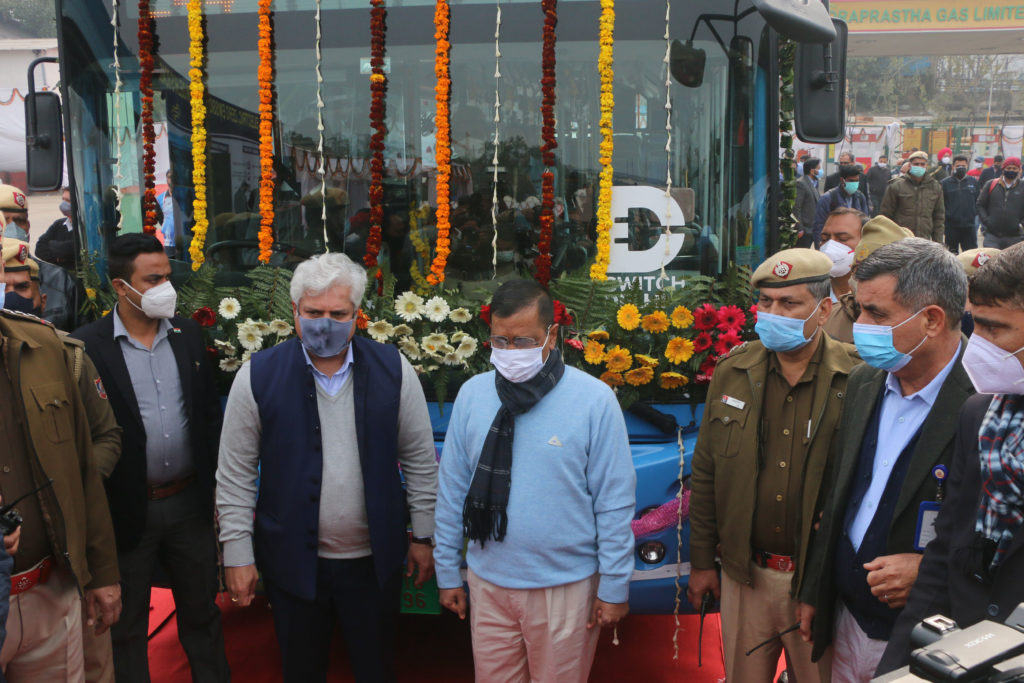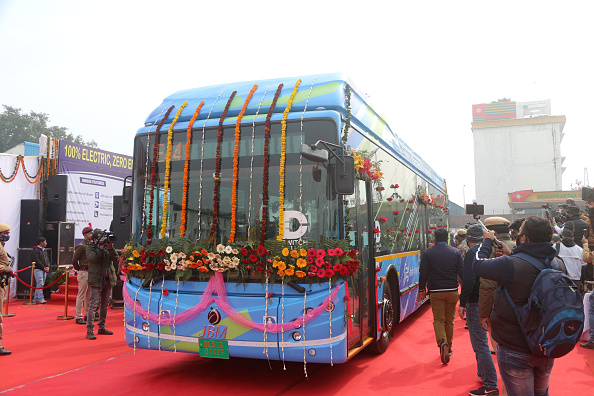A zero emission bus was flagged off by the CM in the first month of the new year. However, at a time when a pall of smog hangs over the city, this can only make a small dent in the air quality index.
Delhi now has an e-bus, the first one being launched by Chief Minister Arvind Kejriwal on Monday from Indraprastha depot. The bus was the first new bus to be added to DTC’s fleet in over a decade, despite the AAP government’s grand promises.
The city’s first ever electric public transport bus will run on a designated circular route, E-44, from the Indraprastha Depot, via ITO, AGCR, Tilak Marg, Mandi House, Barakhamba Road, Connaught Place, Janpath, Rajesh Pilot Marg, Prithviraj Road, Aurobindo Marg, AIIMS, Ring Road, South Extension, Ashram, Bhogal, Jangpura, India Gate, Delhi high court, Pragati Maidan and back to IP Depot. The service will be available from morning 5.30 am and till 8.20 pm at night.
“Today, the Delhi government has dedicated the state’s first electric bus to the public. This marks the beginning of a new era in the transport sector of Delhi. Now, we will see a revolution where as and when older buses go out of service, new electric buses will be onboarded. This is a very important step in combating the problem of pollution. This is a zero emission bus and there’s barely any noise”, the CM said while inaugurating the bus service. The bus is 100% electric with zero tailpipe emissions.
The CM also insisted that the Delhi government would ensure that by April, there would be 300 such buses running on Delhi’s roads. He also mentioned that the goal of the state government is to procure 2,000 e-buses in the coming years. Delhi right now has around 6,900 buses which is the highest number of buses the city has ever had.
Kejriwal further said that the electric buses can be charged within an hour and a half on a fast charger. They can run for a minimum of 120 km per charge. On charging stations, the CM said that all the DTC depots would be getting charging points. As per a policy on e-buses released by the Delhi government in 2019, the government promised that the state will have public charging infrastructure at least every 3 km.
The new bus service also comes up with some key features like, kneeling ramp for disabled passengers and pink seats for women. Each bus has 10 panic buttons and a hooter and also has CCTV cameras connected to a two-way central command and control centre at Kashmere Gate.
The Delhi government had been planning to launch the e-bus service in the national capital since 2018 as the central government had launched the Faster Adoption and Manufacturing of Hybrid and Electric Vehicles (FAME) scheme for a period of two years. The focus of the scheme was on technology development, demand creation and charging infrastructure.
Then in 2019 the government of India launched the FAME II scheme under which it planned to extend financial support of around 9,000 Cr for three years to state governments to help ensure deployment of electric buses on Indian roads. Although the Delhi government wanted to be the first state to deploy e-buses on a large scale, cities such as Hyderabad, Pune, Mumbai, Kolkata and Ahmedabad already have functional e-buses.

In an interview with CitizenMatters in 2019, the Vice Chairperson of the Delhi Dialogue and Development Commission (DDC), an advisory body to the Delhi government Jasmine Shah, explained that the Delhi government took almost eight months for the “entire planning, techno-feasibility assessment, figure out which depots are ready, map out each and every route and the mileage in each, map out the intermediate charging points needed for that and so on…Only after this was done did we go for tendering.” This was the reason the Delhi government took its time to introduce the first e-bus in the capital.
Arvind Kejriwal after launching the first e-bus service through a tweet appealed to the public that to fight against the increasing pollution, they should also switch to electric vehicles.
According to a report by International Council on Clean Transportation, nearly 50% of the world’s electric vehicles are concentrated in just 25 global cities which are called the EV capitals of the world. The reason why they are called the EV capitals according to the report is that “They all have comprehensive policy packages that include mandates in addition to financial incentives for consumers, funding for infrastructure development, and consumer-awareness initiatives.” Delhi therefore has a long way to go before it could be counted in that list.





